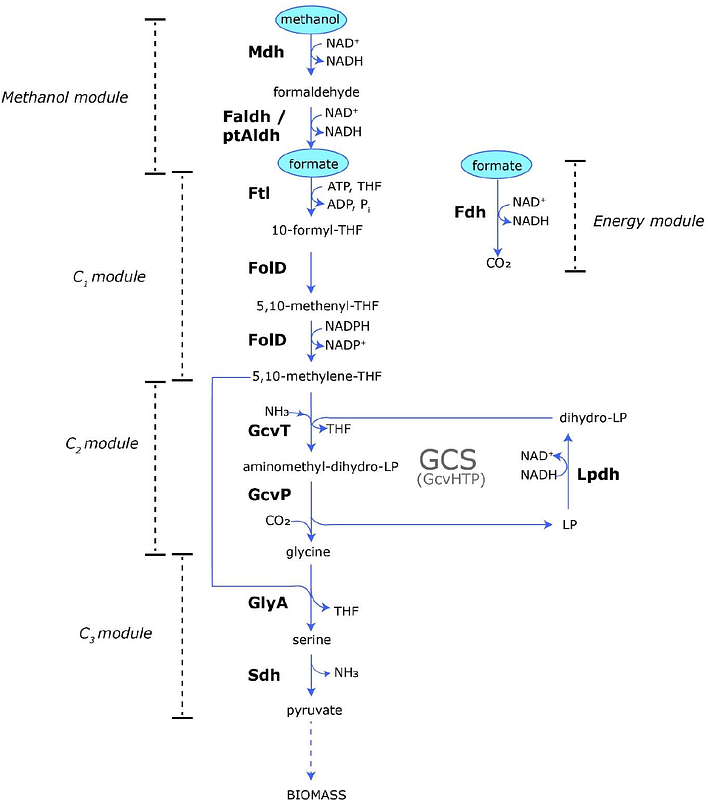Parageobacillus thermoglucosidasius and the reductive glycine pathway: A journey of Almosts and Maybes.

Parageobacillus thermoglucosidasius and the reductive glycine pathway: A journey of Almosts and Maybes.
Paredes Barrada, M.; Donati, S.; van Kranenburg, R.; Claassens, N. J.
AbstractWe aimed to engineer the reductive glycine pathway (rGlyP) in Parageobacillus thermoglucosidasius for synthetic assimilation of formate and methanol via a mixed rational and evolutionary approach. We attempted to obtain glycine or serine auxotrophic strains in P. thermoglucosidasius as a starting point to impose a selective pressure and engineer formate assimilation via the rGlyP. While serine auxotrophy was partially achieved via gene deletion of serA, alternative glycine biosynthesis routes limited its stringency, and glycine auxotrophy could not be obtained due to unsuccessful genome modification. Even though formate supplementation improved the growth of the serA deficient strain, we confirmed that formate was not assimilated into biomass via 13C-labeling experiments. Thus, we hypothesized the increase in growth of the serA deficient mutant was likely due to extra energy provided by formate oxidation, rather than biomass incorporation. We also attempted heterologous overexpression of the C1 module from Moorella thermoacetica, but this did not yield any detectable effect in growth nor formate assimilation. These findings highlight the challenges in rGlyP implementation in non-model organisms, the need for better metabolic annotation in P. thermoglucosidasius, and provide valuable insights for future engineering of synthetic C1 metabolism in thermophiles via the rGlyP.